-
 Bitcoin
Bitcoin $86,250.6982
1.63% -
 Ethereum
Ethereum $1,890.1026
-0.98% -
 Tether USDt
Tether USDt $1.0000
0.01% -
 XRP
XRP $2.1367
0.29% -
 BNB
BNB $603.5934
-0.76% -
 Solana
Solana $129.4201
2.45% -
 USDC
USDC $1.0000
0.00% -
 Dogecoin
Dogecoin $0.1724
0.45% -
 Cardano
Cardano $0.6839
0.62% -
 TRON
TRON $0.2381
0.57% -
 Toncoin
Toncoin $3.9840
-0.47% -
 Chainlink
Chainlink $13.8431
-2.30% -
 UNUS SED LEO
UNUS SED LEO $9.3956
0.41% -
 Stellar
Stellar $0.2705
-1.46% -
 Avalanche
Avalanche $19.2650
-0.80% -
 Sui
Sui $2.4309
0.03% -
 Shiba Inu
Shiba Inu $0.0...01260
-0.64% -
 Hedera
Hedera $0.1716
0.58% -
 Polkadot
Polkadot $4.1457
-0.42% -
 Litecoin
Litecoin $85.5964
0.72% -
 Bitcoin Cash
Bitcoin Cash $308.6728
-0.07% -
 MANTRA
MANTRA $6.3356
0.99% -
 Bitget Token
Bitget Token $4.5842
-0.52% -
 Dai
Dai $0.9997
-0.04% -
 Ethena USDe
Ethena USDe $0.9999
0.01% -
 Hyperliquid
Hyperliquid $13.7596
4.34% -
 Pi
Pi $0.6794
-3.81% -
 Monero
Monero $219.4683
1.07% -
 Uniswap
Uniswap $6.1878
-0.70% -
 Aptos
Aptos $5.3777
0.02%
How do mining machines deal with environmental temperature changes?
Mining machines generate significant heat, requiring effective cooling like heatsinks, fans, and liquid systems to maintain optimal temperatures and prevent hardware damage.
Apr 01, 2025 at 08:49 pm
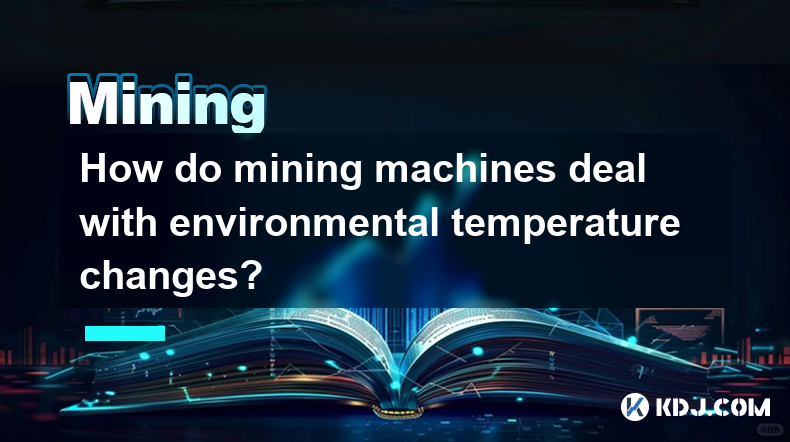
The Impact of Temperature on Cryptocurrency Mining Hardware
Mining machines, particularly those using ASICs (Application-Specific Integrated Circuits) for cryptocurrencies like Bitcoin, generate significant heat during operation. This heat is a byproduct of the complex calculations performed by the hardware. Maintaining optimal operating temperatures is crucial for the longevity and efficiency of these machines. Extreme temperatures, both high and low, can severely impact performance and even cause irreversible damage. Understanding how these machines handle temperature fluctuations is key to maximizing their lifespan and profitability.
Cooling Mechanisms in Mining Machines
Mining hardware manufacturers employ various strategies to mitigate the effects of temperature changes. These strategies are crucial for maintaining optimal operating temperatures within the recommended range specified by the manufacturer. Failure to do so can lead to reduced hashrate, increased error rates, and ultimately, hardware failure.
Heatsinks: These passive cooling devices are essential components. They draw heat away from the ASIC chips, dissipating it into the surrounding air. Larger and more efficient heatsinks are generally preferred for more effective cooling.
Fans: Fans actively circulate air, drawing cool air over the heatsinks and expelling the heated air. The number and size of fans influence the cooling capacity. Proper fan placement and airflow management are vital for optimal performance.
Liquid Cooling: For high-performance mining operations, liquid cooling systems offer superior heat dissipation compared to air cooling. These systems circulate a coolant, typically water or a specialized fluid, to absorb heat from the ASICs. This allows for higher sustained hashrates and improved stability in high-temperature environments.
Air Conditioning: In environments with consistently high ambient temperatures, air conditioning is often necessary to maintain a suitable operating temperature for the mining hardware. This can significantly impact energy consumption, but it's often a necessary trade-off to ensure stable operation.
Temperature Monitoring and Control
Modern mining machines often incorporate temperature sensors and monitoring software. This allows users to track the internal temperature of the ASICs and other critical components in real-time. Many mining rigs provide alerts if temperatures exceed pre-defined thresholds.
Software Monitoring: Mining software often includes features for monitoring hardware temperatures. This enables users to proactively address potential issues before they escalate. Regular monitoring is crucial for early detection of overheating.
Temperature Alarms: Many systems offer configurable temperature alarms. These alerts notify the user if temperatures reach critical levels, allowing for timely intervention to prevent damage. Setting appropriate thresholds is important to avoid false alarms and ensure timely responses to genuine issues.
Automatic Shutdowns: Some advanced systems include automatic shutdown features. If temperatures exceed a critical threshold, the system will automatically power down the mining hardware to prevent damage. This safety feature is crucial in unattended operations.
Adapting to Extreme Temperatures
While cooling solutions help manage temperature fluctuations, extreme conditions require additional considerations.
High Temperatures: In hot climates, additional cooling may be necessary. This could involve upgrading to a more powerful cooling system, using air conditioning, or relocating the mining operation to a cooler environment. Maintaining a consistent and cool operating environment is paramount.
Low Temperatures: Extremely low temperatures can also negatively impact performance. While less common, excessively cold environments can cause condensation and other issues. Insulation and controlled heating might be necessary in such cases. The focus should be on maintaining the optimal operating temperature range specified by the manufacturer.
Environmental Considerations
The environmental impact of cryptocurrency mining is a growing concern. The energy consumption of mining operations contributes significantly to carbon emissions. Effective cooling strategies play a role in minimizing this impact.
Energy Efficiency: Choosing energy-efficient hardware and cooling solutions reduces the overall energy consumption and environmental footprint of the mining operation. Prioritizing energy-efficient components is crucial for both cost-effectiveness and environmental responsibility.
Renewable Energy: Using renewable energy sources, such as solar or wind power, to power mining operations can significantly reduce their carbon footprint. Transitioning to sustainable energy sources is vital for the long-term sustainability of the cryptocurrency industry.
Dealing with Power Outages and Temperature Spikes
Power outages can cause sudden temperature spikes in mining machines. This is because the cooling systems typically rely on electricity to function.
Uninterruptible Power Supplies (UPS): Using a UPS can provide backup power to the mining hardware and cooling systems during power outages, preventing overheating and potential damage. A UPS provides a crucial buffer during power interruptions.
Emergency Cooling: In scenarios where a prolonged power outage is anticipated, having backup cooling solutions, such as passive cooling systems or emergency power sources for fans, can help mitigate the risk of overheating. Planning for contingencies is crucial for protecting the investment.
FAQs
Q: What happens if my mining machine overheats?
A: Overheating can lead to reduced hashrate, increased error rates, and ultimately, permanent hardware damage. In severe cases, it can cause the ASICs to fail completely.
Q: How often should I monitor the temperature of my mining machines?
A: Regular monitoring is recommended, ideally several times a day, especially during periods of high ambient temperatures. The frequency depends on the specific hardware and environmental conditions.
Q: Can I use a standard computer fan to cool my mining machine?
A: While possible, standard computer fans might not be sufficient for the high heat output of mining ASICs. Dedicated high-performance fans or liquid cooling systems are generally recommended.
Q: What is the ideal operating temperature range for mining machines?
A: The ideal operating temperature range varies depending on the specific hardware model. Consult the manufacturer's specifications for the optimal temperature range for your particular mining machine.
Q: How can I reduce the energy consumption of my mining operation while maintaining effective cooling?
A: Using energy-efficient hardware, optimizing cooling strategies, and employing renewable energy sources are key to minimizing energy consumption while ensuring effective cooling.
Disclaimer:info@kdj.com
The information provided is not trading advice. kdj.com does not assume any responsibility for any investments made based on the information provided in this article. Cryptocurrencies are highly volatile and it is highly recommended that you invest with caution after thorough research!
If you believe that the content used on this website infringes your copyright, please contact us immediately (info@kdj.com) and we will delete it promptly.
- Justin Sun Reveals First Digital Trust (FDT) Is Effectively Insolvent
- 2025-04-03 03:00:13
- Techteryx, the firm behind TrueUSD, required a loan from Justin Sun after its reserves became stuck in First Digital Trust
- 2025-04-03 03:00:13
- Maxine Waters slams President Donald Trump's crypto ventures as 'multiple schemes' to enrich himself
- 2025-04-03 02:55:12
- HEXminer is the Crown Jewel of Cloud Mining
- 2025-04-03 02:55:12
- Best Crypto Presales of 2025: Top Upcoming ICOs Worth Investing In
- 2025-04-03 02:50:12
- Overtime launches $OVER token and full Account Abstraction UX
- 2025-04-03 02:50:12
Related knowledge
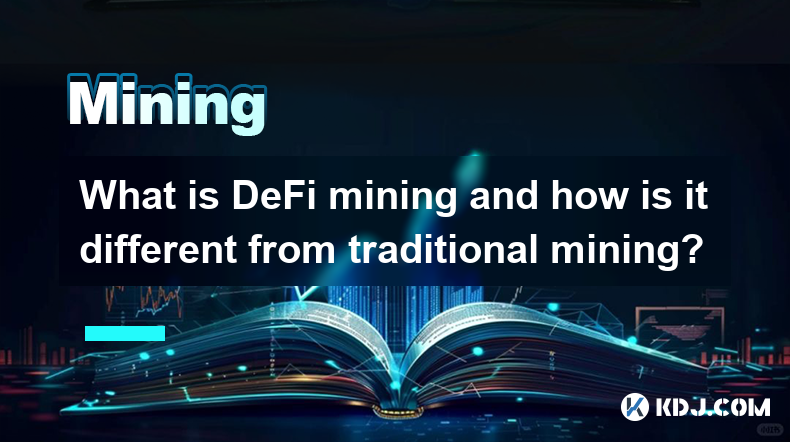
What is DeFi mining and how is it different from traditional mining?
Apr 02,2025 at 09:50am
DeFi mining, also known as yield farming or liquidity mining, is a process within the decentralized finance (DeFi) ecosystem where users provide liquidity to decentralized platforms in exchange for rewards. Unlike traditional mining, which involves solving complex mathematical problems to validate transactions and add them to a blockchain, DeFi mining f...
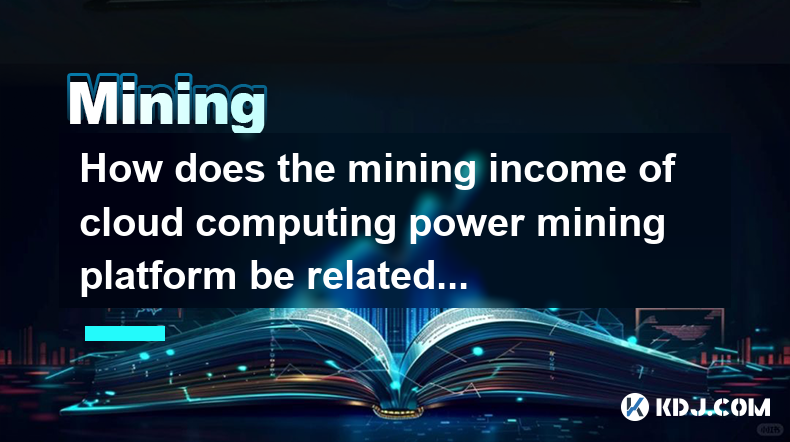
How does the mining income of cloud computing power mining platform be related to mining pool allocation?
Apr 02,2025 at 01:56am
The relationship between the mining income of a cloud computing power mining platform and the allocation of mining pools is a crucial aspect of cryptocurrency mining. Mining income is influenced by various factors such as the efficiency of the mining hardware, electricity costs, and the specific cryptocurrency being mined. However, the allocation of min...
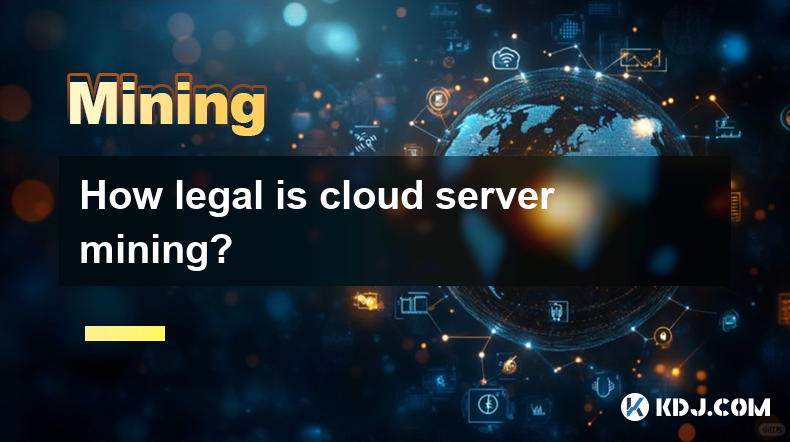
How legal is cloud server mining?
Apr 01,2025 at 08:08am
Cloud server mining has become an increasingly popular method for individuals and companies to participate in cryptocurrency mining without the need for expensive hardware and high electricity costs. However, the legality of cloud server mining can be a complex issue, as it varies by jurisdiction and depends on several factors. This article will explore...
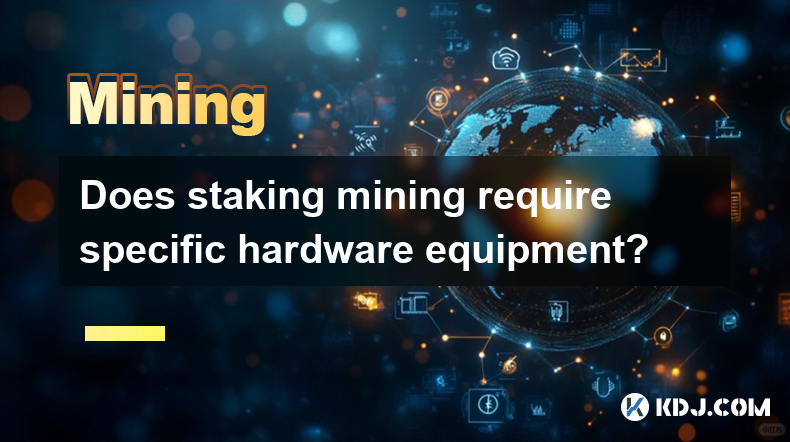
Does staking mining require specific hardware equipment?
Apr 02,2025 at 08:21am
Staking mining, often referred to simply as staking, is a process used by various cryptocurrencies to secure their networks and validate transactions. Unlike traditional mining, which often requires specialized hardware like ASICs (Application-Specific Integrated Circuits) or high-performance GPUs (Graphics Processing Units), staking typically does not ...
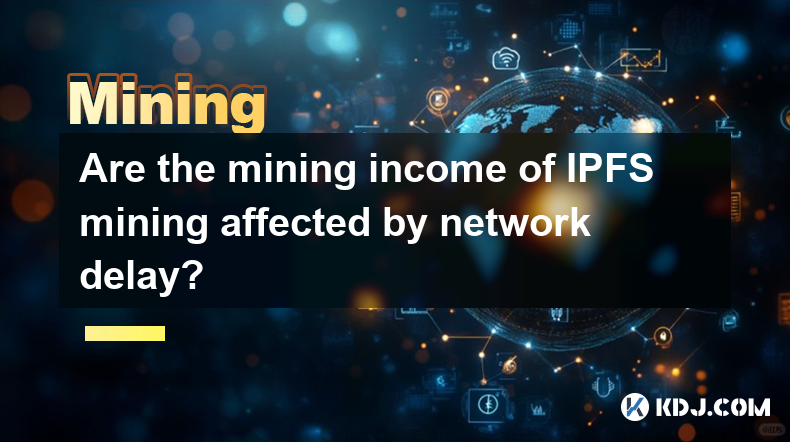
Are the mining income of IPFS mining affected by network delay?
Apr 01,2025 at 09:36pm
Are the Mining Incomes of IPFS Mining Affected by Network Delay? Understanding IPFS Mining and Network Delay's ImpactIPFS (InterPlanetary File System) mining, unlike Bitcoin mining, doesn't involve solving complex cryptographic puzzles. Instead, it focuses on providing storage and bandwidth to the network. Miners earn rewards for storing and sharing dat...
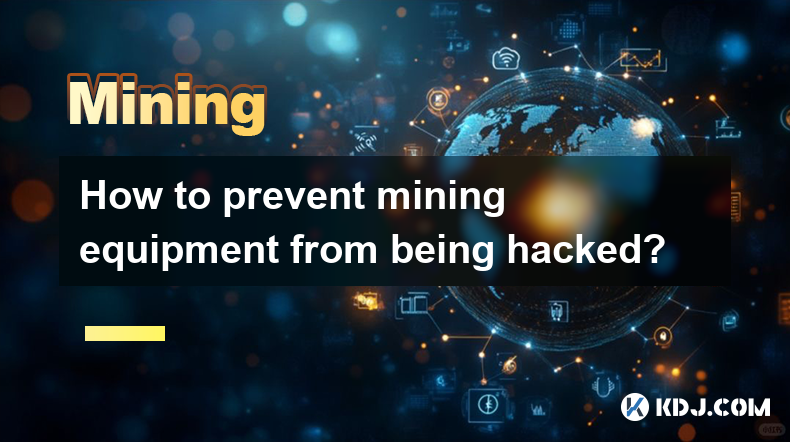
How to prevent mining equipment from being hacked?
Apr 01,2025 at 06:22am
Understanding the ThreatsCryptocurrency mining, while potentially lucrative, exposes your equipment to various cyber threats. These threats range from simple malware infections that steal your mining profits to sophisticated attacks that hijack your entire operation. Understanding these threats is the first step in effective protection. This includes r...

What is DeFi mining and how is it different from traditional mining?
Apr 02,2025 at 09:50am
DeFi mining, also known as yield farming or liquidity mining, is a process within the decentralized finance (DeFi) ecosystem where users provide liquidity to decentralized platforms in exchange for rewards. Unlike traditional mining, which involves solving complex mathematical problems to validate transactions and add them to a blockchain, DeFi mining f...

How does the mining income of cloud computing power mining platform be related to mining pool allocation?
Apr 02,2025 at 01:56am
The relationship between the mining income of a cloud computing power mining platform and the allocation of mining pools is a crucial aspect of cryptocurrency mining. Mining income is influenced by various factors such as the efficiency of the mining hardware, electricity costs, and the specific cryptocurrency being mined. However, the allocation of min...

How legal is cloud server mining?
Apr 01,2025 at 08:08am
Cloud server mining has become an increasingly popular method for individuals and companies to participate in cryptocurrency mining without the need for expensive hardware and high electricity costs. However, the legality of cloud server mining can be a complex issue, as it varies by jurisdiction and depends on several factors. This article will explore...

Does staking mining require specific hardware equipment?
Apr 02,2025 at 08:21am
Staking mining, often referred to simply as staking, is a process used by various cryptocurrencies to secure their networks and validate transactions. Unlike traditional mining, which often requires specialized hardware like ASICs (Application-Specific Integrated Circuits) or high-performance GPUs (Graphics Processing Units), staking typically does not ...

Are the mining income of IPFS mining affected by network delay?
Apr 01,2025 at 09:36pm
Are the Mining Incomes of IPFS Mining Affected by Network Delay? Understanding IPFS Mining and Network Delay's ImpactIPFS (InterPlanetary File System) mining, unlike Bitcoin mining, doesn't involve solving complex cryptographic puzzles. Instead, it focuses on providing storage and bandwidth to the network. Miners earn rewards for storing and sharing dat...

How to prevent mining equipment from being hacked?
Apr 01,2025 at 06:22am
Understanding the ThreatsCryptocurrency mining, while potentially lucrative, exposes your equipment to various cyber threats. These threats range from simple malware infections that steal your mining profits to sophisticated attacks that hijack your entire operation. Understanding these threats is the first step in effective protection. This includes r...
See all articles
























































































